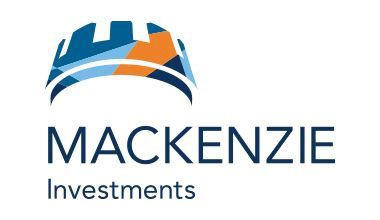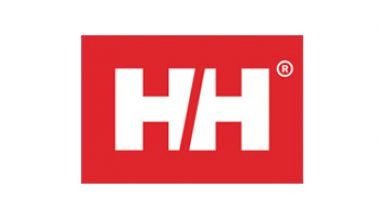Physical Fitness
Alpine skiing is a complex sport that requires high levels of technical skill and physical fitness to counteract the internal and external forces placed on the body during a run. Developing a high level of overall physical fitness and athleticism is critical to becoming competitive at the international level.
Skiers must be active year-round through participation in complementary sports to develop the standard of athleticism and physical fitness required to succeed in ski racing.
The physical demands of ski racing require aerobic endurance, stamina, strength, power, agility, balance and coordination. These physical skills should be developed from a young age to lifelong enjoyment of skiing and sports.

ACA FITNESS COMBINE
The ACA Fitness Combine aims to implement a system-wide standardized testing protocol to ensure Canadian skiers are developing ski-specific physical fitness abilities as they progress through the athlete development pathway while tracking the progression of skiers.
PURPOSE
The development of general physical fitness is necessary for elite ski racers. Physical literacy, the establishment of efficient fundamental movement patterns in coordination in various situations, and the development of general strength, power, and endurance are critical neuromuscular and physiological capacities required of elite-level ski racers.An athlete's fitness level will either support or inhibit technical skill development by greatly influencing their ability to tolerate the training volumes required across different stages of development.
Analysis and research have shown that the following physical fitness factors are characteristic of top ski racers:
- Good aerobic work capacity (high maximal oxygen uptake/VO2Max)
- Great muscular strength in terms of dynamic muscle function
- Significantly prolonged muscular endurance, in terms of dynamic muscle function in given submaximal work
- Well-developed muscular coordination
Assessing and quantifying these qualities can help identify potential performance deficits and track long-term performance trends. This document provides an overview of Alpine Canada Alpin's (ACA) nationwide physical fitness combine protocol. As ACA collects data and builds normative trends for each gender and phase of development, the ACA Fitness Combine will identify target areas for later development to promote the development of successful elite-level ski racers.
There may be certain situations where teams have access to more sophisticated testing methods. This nationwide physical fitness combine program does not prevent the inclusion of additional testing. Instead, it provides guidelines for benchmarking ski-specific fitness abilities that are important for all ski racers in the development pathway. A coach can use the data gathered from each test to more accurately determine an athlete's starting point with their developmental and physical fitness stages and track subsequent progress through re-evaluation. This will promote the construction of an appropriate training program that serves the athlete's needs in the context of their sport, ski racing, and is suitable for their capabilities.
The ACA Fitness Combine protocol represents a critical step forward in Canadian alpine ski racing. Standardized physical fitness testing implemented across various stages of development contributes to this cohesive pathway. A development pathway is not a series of independent stops as a skier ascends the ranks to international competition. Instead, it should be one continuous effort on behalf of all stakeholders to provide a fun, cohesive and exhilarating experience for all athletes.
PDF FILES
ACA Fitness Combine Protocol (PDF)
ACA Fitness Combine Athlete Performance Report (PDF)
ACA Performance Standards U10 - U21+ (PDF)
ACA Estimated 1RM Calculator and Weightlifting recording sheet (Excel)
Weightlifting Recording Sheet (PDF)
Physical Activity Readiness Questionnaire (PAR-Q) 2014
ACA Fitness Combine Equipment, Facility and Administration Checklist
AUDIO FILES
AIS 20m Shuttle Run (Beep Test)
VIDEO FILES
Physical Training for Para-Alpine
Much like the development of a long-term plan for skiing, the same must be looked at for a participant's or athlete's physical aspect. For the Para-Athlete, we must make specific considerations based on the physical impairment of the individual. It is necessary to realize that every aspect of the program will be considered individually due to the differences between each athlete’s needs. Training does not differ from an able-bodied regimen. However, extra considerations should be taken into account for each category.Visually Impaired
Goals: develop proprioceptive awareness and balance to increase confidence in spatial moving, if possible, improve chemistry and communication with a guide.
Considerations:
- Not usually any physical restrictions, no modifications to testing procedures.
- Need to educate and progress from bodyweight movements to movements with external objects and object manipulation.
- Landing and jumping progressions can help build spatial awareness, increasing balance and coordination.
- Outdoor conditioning workouts will most often require a guide with experience.
Sitting
Goals: Develop and improve sitting positioning, balance, core strength, scapular, rotator cuff and potentially hip stabilizers.
Considerations:
SAFETY: gain awareness of their ASIA (American Spinal Injury Association) status and lesion level. Before starting a program, gain a clear understanding of their current function (both sensation and motor).
- Orthostatic hypertension: gradually change positions.
- Autonomic dysreflexia (T6 and above): ensure they have used the washroom before their workouts and there are no bladder infections, restrictive clothes or other potentially noxious stimuli present.
- Respiratory function: do they need an assisted cough?
- Caution with overtraining as this will affect their ability to carry out activities of daily living.
- They may need more help than usual with moving themselves and equipment around the weight room or training area.
- Be aware of areas without feeling and rubbing pressure points during specific movements.
Standing
Goals: Address muscular imbalances that may occur. Engage and encourage proper movement patterns, but understand that they may not be perfect.
SAFETY: If working with an amputee, ensure that skin care is managed, particularly if training in a hot environment.
- Understand the differences in each athlete's range of motion, strength and optimal positioning.
- All of the facets of training (strength, power, agility, etc.) can be trained; however, they all may look different between athletes and possibly within an athlete (i.e. left and right sides).
- Some athletes (e.g. Cerebral Palsy or stroke) may need different movements for each side of their body, don’t neglect the less functioning side.


